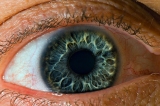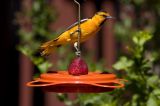- Forum
- General Discussion | Introductions | Off Topic Forum
- Photography General Discussion
- Can someone explain Exposure Compensation
Can someone explain Exposure Compensation
-
 Topic Author
Topic Author
- Gabriel Photos
- Lone Wolf
-
- Nikon D80
- Followers: 48
- Posts: 193
-
Points:
728
Post #7029
-

- KVRNut
- Newbie
- Followers: 4
-
Points:
10
Post #7127
Let's say you have an unusual lighting condition to take a back lit picture of a subject like say a snow scene, a bright window or a bright day at the beach with the sun reflecting off the water. Under such conditions, your camera may be fooled into under exposing your subject so you give your subject more exposure. How about when you're using a filter? I'll use the exposure compensation when using a ND or polorizer in poor light conditions to extend the exposure times so the picture isn't as dark. On the other side of the coin, there are times when you want to cut the exposure time right back like when you're doing a portrait shot in strong light with the lens aperture wide open. You can use a ND or polorizer filter but then when you're using a fast lens and conditions are bright, use the compensation in addition to the filter so your subject isn't blown out.
Exposure compensation is best used in an auto mode but not a manual mode. I'll frequently use it when I'm shooting in aperture priority with filters screwed on. Makes for an easy step down.
Get out there, experiment, and have some fun!
Hope this helps and hope I got it right...
-

- waynescook
- Has the Hang of it
-
- Cannon 10D
- Followers: 7
- Posts: 61
-
Points:
22
Post #7138
Like KNRNut said, get out their and experiment, and have fun!
Hope to hear from you again.
WCBIRDSNLANDSC
- Forum
- General Discussion | Introductions | Off Topic Forum
- Photography General Discussion
- Can someone explain Exposure Compensation
Latest Reviews
The Canon EOS R100 is an entry-level mirrorless camera introduced in 2023. But just because it’s an entry-level camera doesn’t mean it’s a bare-bones camera. Find out why in this review!
Nikon’s retro-looking Nikon Zfc is anything but retro. Under its classic body is a host of features and amenities that make it a worthwhile compact mirrorless camera for 2024.
The Canon EOS R50 is one of the newest R-system cameras from Canon. Is it worth your money? Find out all the details you need to know in this comprehensive review.
The Sony FE 70-200mm f/2.8 GM OSS II is Sony’s flagship mirrorless zoom lens. As such, it’s loaded with features and has a top-shelf build quality that makes it a top pick!
Forum Top Posters
-
1TCav 6 posts
-
2Scotty 6 posts
-
3Foggy 4 posts
-
4No Show 3 posts
-
5CaptNemo 2 posts
-
6Roger Lang 2 posts
-
7Otto F 2 posts
-
8Fitch 2 posts
-
9Kenta 2 posts
-
10Pork Express 2 posts
Latest Articles
Using leading lines in photography helps improve the composition by drawing viewers in and leading their eye from the foreground to the background. Explore some fine examples of this in this guide!
The Insta360 has one of the best lineups of action cams and 360-degree cameras. With these Insta360 accessories, you can elevate your photography and videography game!
Creating impactful photos of landscapes depends on many factors, not the least of which is your talent behind the lens. This guide explores other elements required for the best product.
The Canon EOS R100 is an entry-level mirrorless camera introduced in 2023. But just because it’s an entry-level camera doesn’t mean it’s a bare-bones camera. Find out why in this review!
Are you ready to upgrade your camera? Before buying new, you might consider the value of purchasing used gear to save money.
The Olympus OM-D E-M10 Mark IV is a micro four thirds camera released in 2020. It’s an entry-level system along with the OM-D E-M5 Mark III. Use this guide to determine which one is best for you!
Blue hour photography might not be as well known as golden hour photography, but it is every bit as good a time to create epic images of landscapes. Learn how in this quick tutorial!
Nikon’s retro-looking Nikon Zfc is anything but retro. Under its classic body is a host of features and amenities that make it a worthwhile compact mirrorless camera for 2024.














